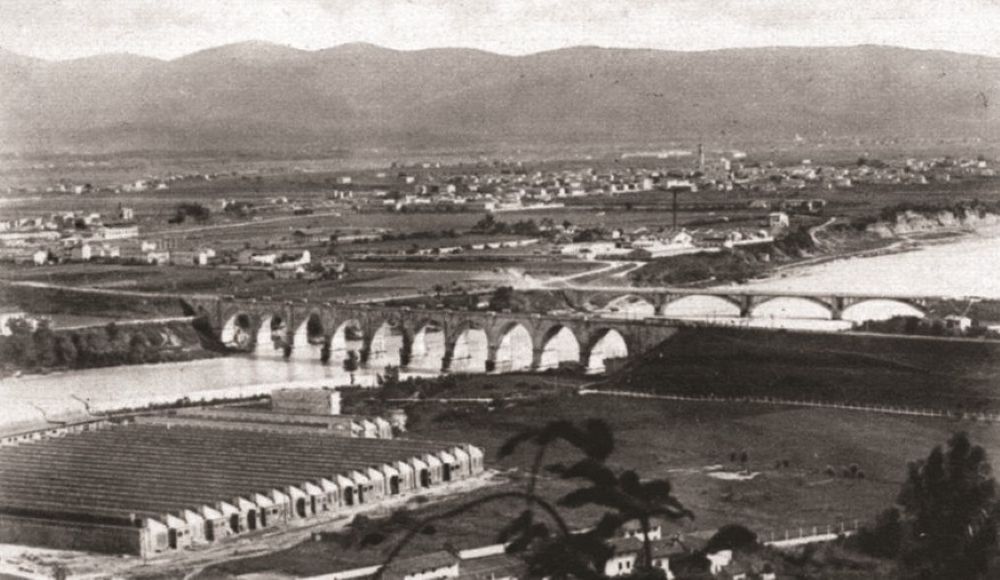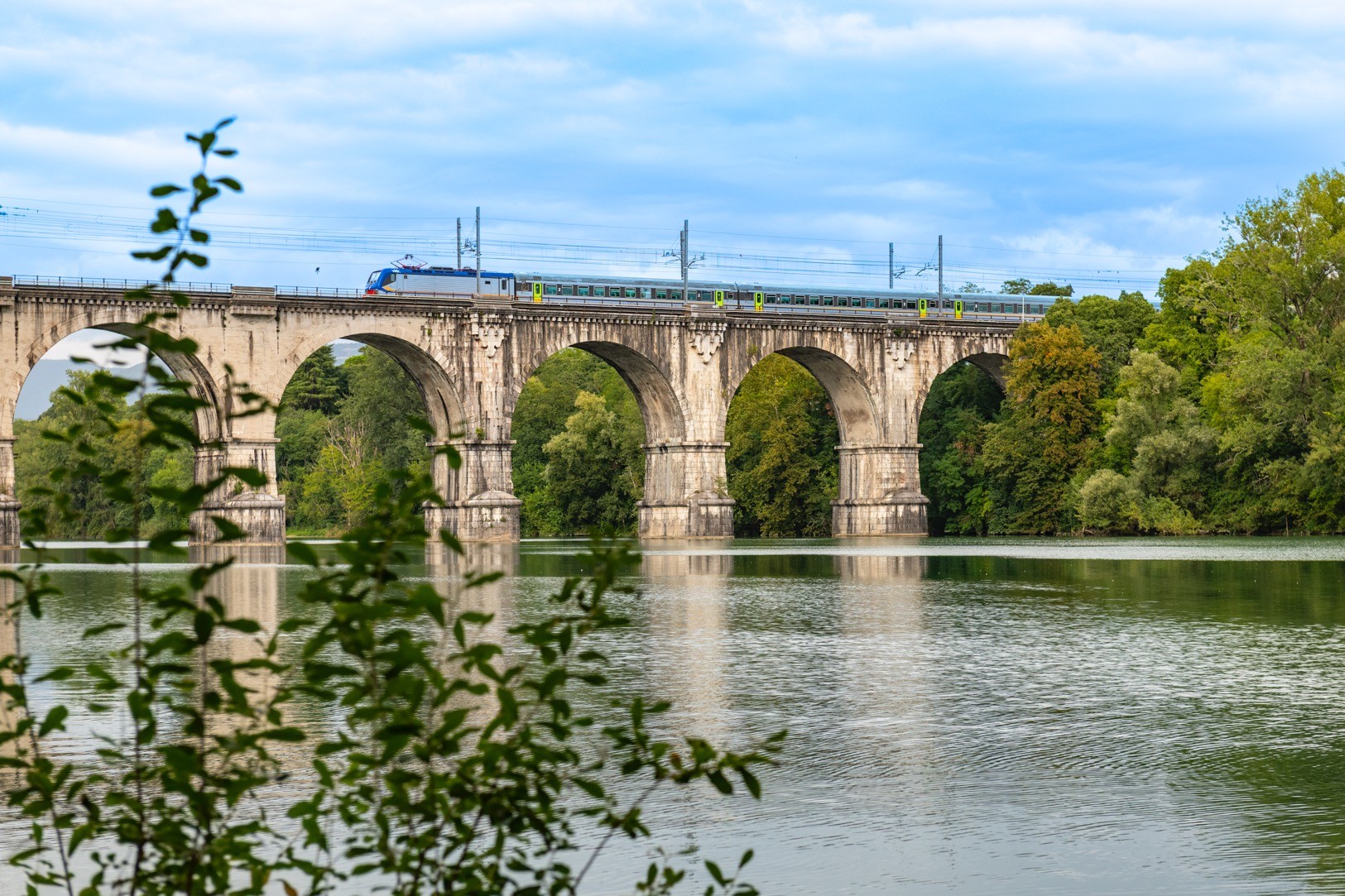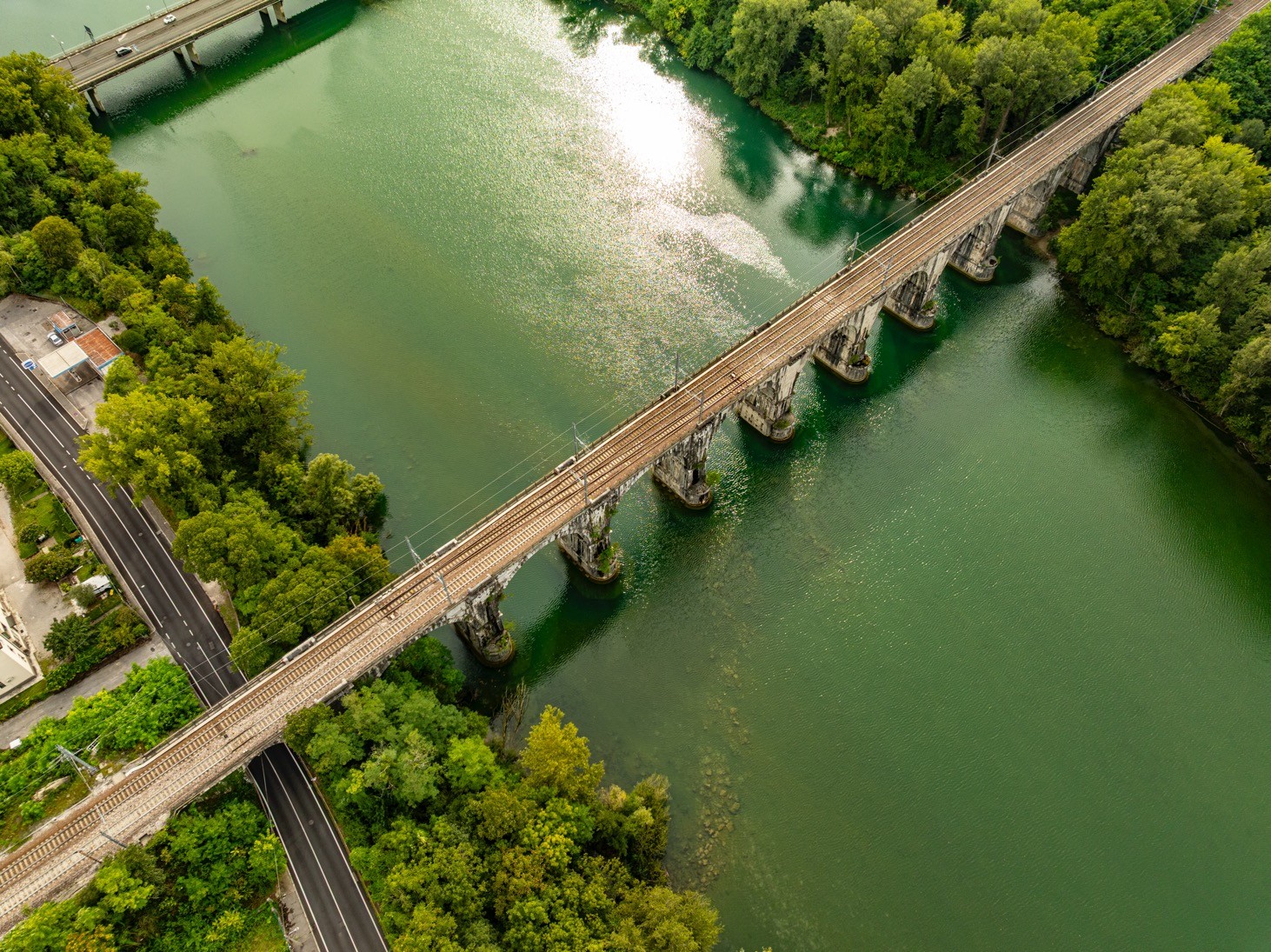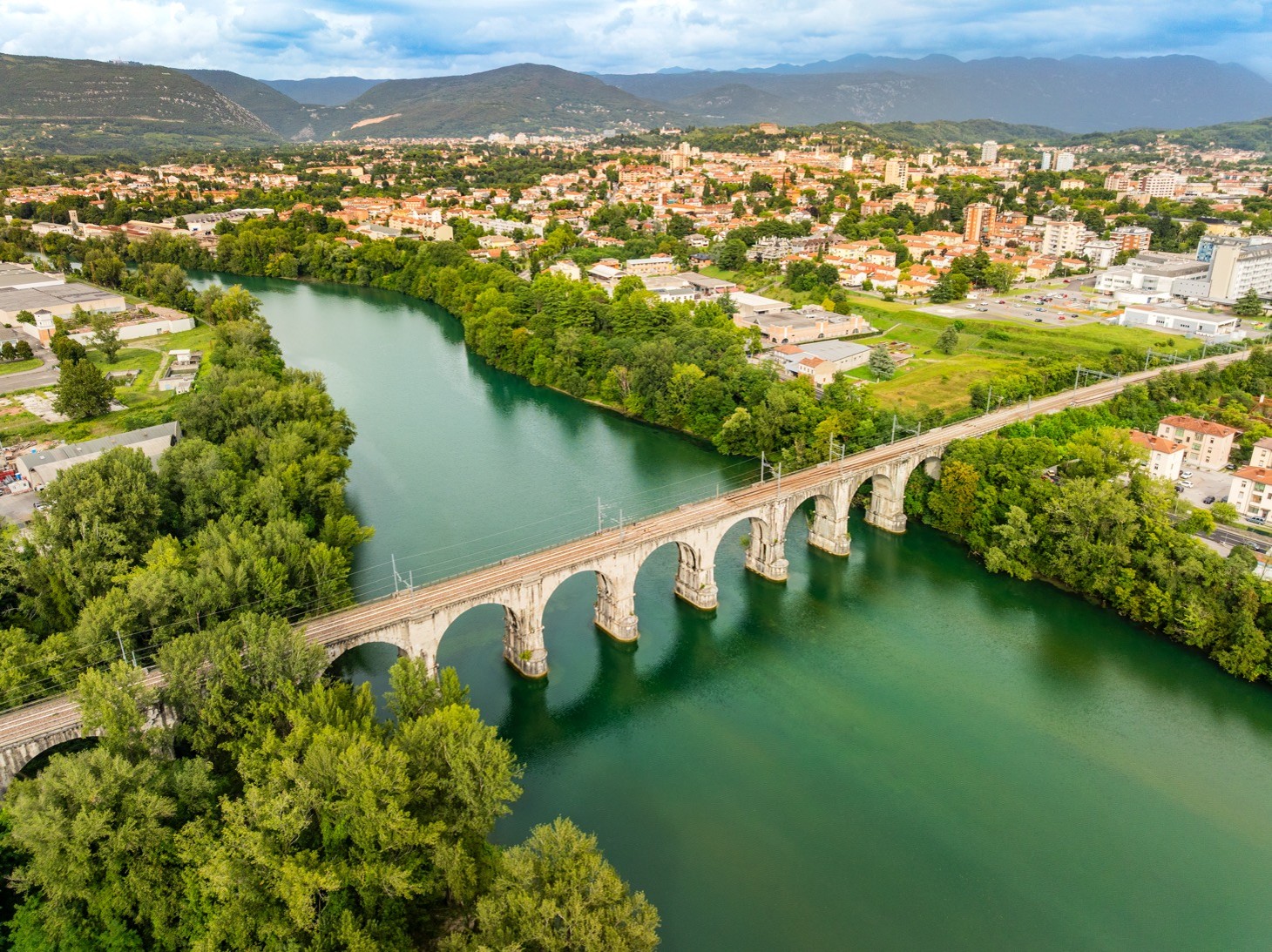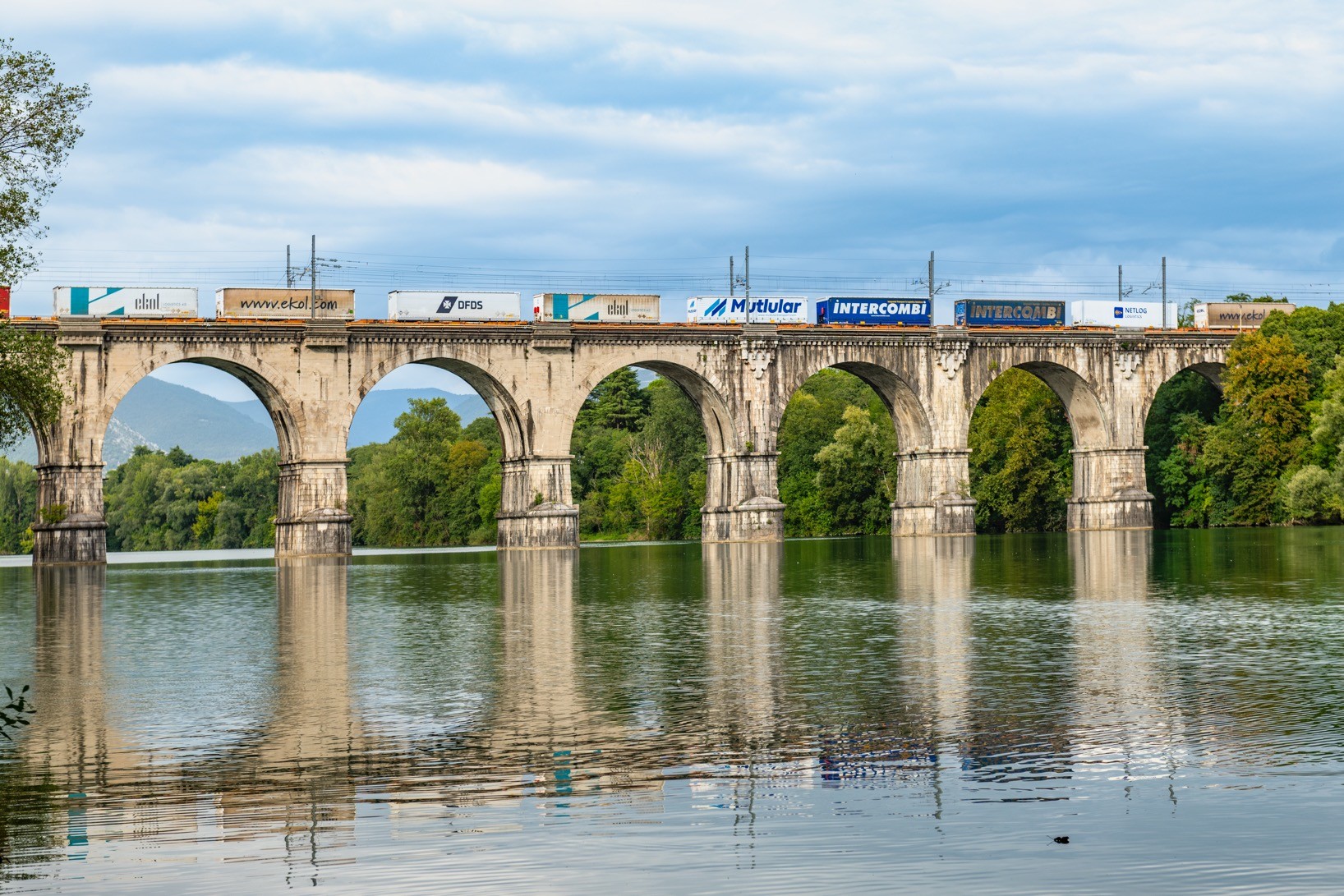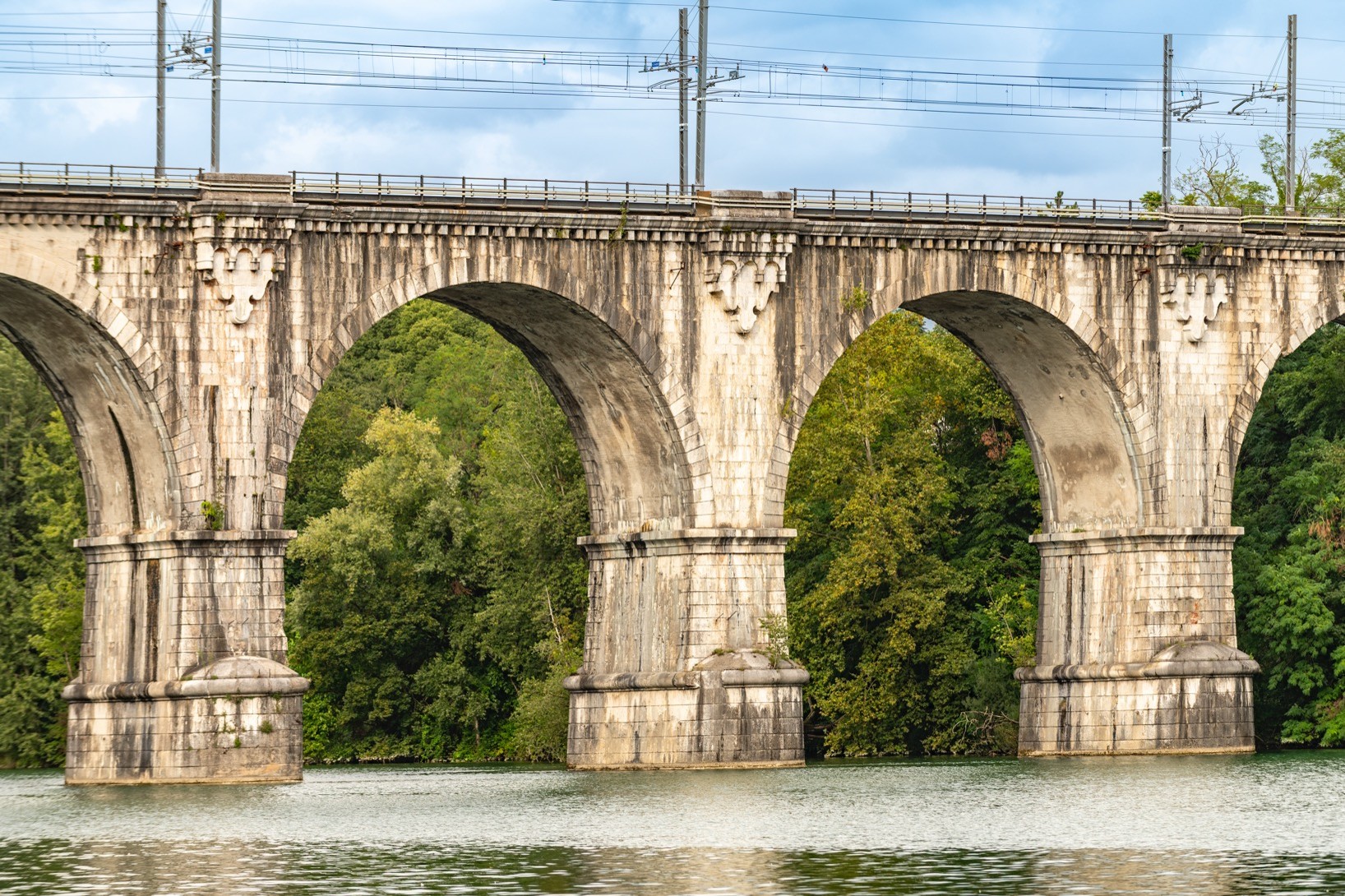gorizia
Gorizia railway bridge
Alessio VENTURINI
Giacomo MILANO
Giacomo MILANO
HISTORY
The Veneto-Illyrian railway line connected two major routes: the Ferrovia Meridionale (Southern Railway) from Vienna to Trieste and the Ferrovia Ferdinandea (Ferdinand Railway) from Venice to Milan, creating a complete rail link between Vienna, Trieste, and Venice-Milan. The Lombardisch-Venetianische Ferdinandsbahn (Lombard-Venetian Society for the Construction of the Railway from Venice to Milan), locally known as the Ferdinandea, was founded in 1837. The construction faced significant challenges, including building the lagoon bridge between Venice and the mainland. The Risorgimento movements of 1848–49 caused additional difficulties, notably damaging several arches of the lagoon bridge. The Ferdinand Railway was completed in 1857, while engineer Carlo Ghega, appointed by the Habsburg State, oversaw the Vienna-Trieste project. The final Ljubljana-Trieste section of the Southern Railway opened in 1857, though it bypassed Gorizia. Since Trieste and Venice lacked a direct rail connection, authorities established the Ferrovia Veneto-Illirica (Veneto-Illyrian Railway) in 1849 under Southern Railway management. The initial proposed route—through Treviso, Pordenone, Udine, and Aurisina—would have bypassed Gorizia, prompting strong opposition from city officials. Their petition to Emperor Franz Joseph succeeded, and the line was rerouted through Cormons, Gorizia, and Sagrado, incorporating Rubbia. The Udine-Monfalcone section via Gorizia began operating on 3 October 1860. The military conflicts shaped the railway’s history from the Wars of Independence through World War I. On 8 August 1916, during the Austrian retreat, commanders ordered the Isonzo bridges destroyed. Subsequently, the Venice-Trieste railway via Udine was incorporated into the State Railways network, with the Southern Railway finally dissolving in 1968.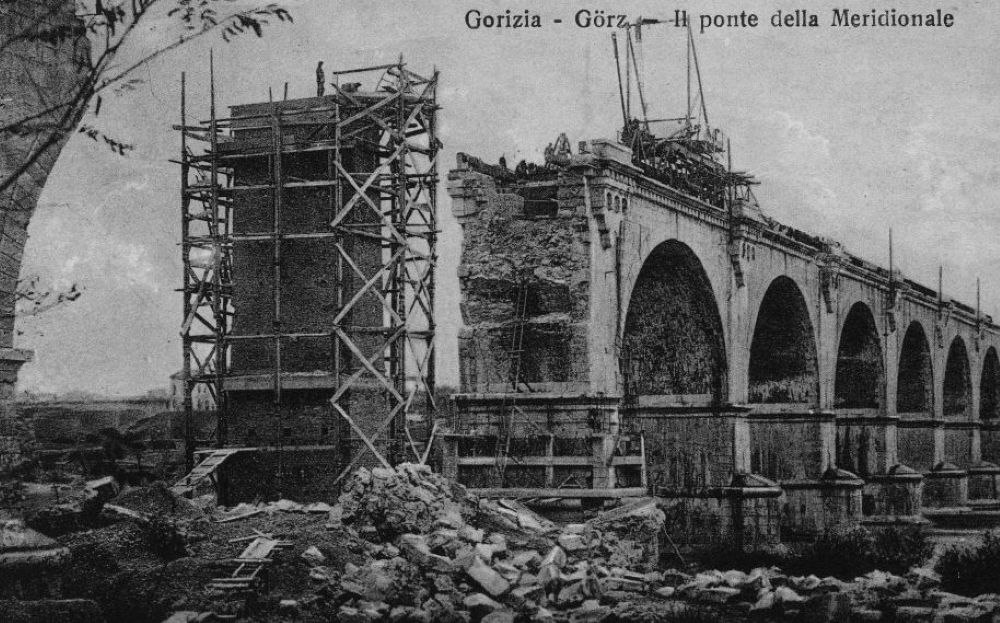
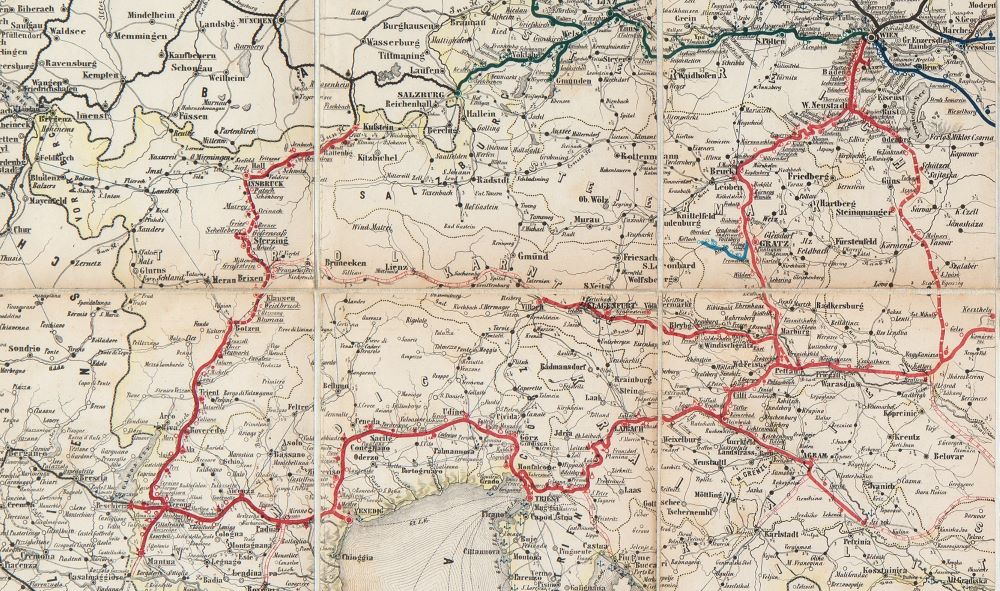

BRIDGE CONSTRUCTION AND STRUCTURAL ENGINEERING
At kilometre marker 32+130 in Gorizia, the bridge over the Isonzo River is a remarkable engineering achievement on the Veneto-Illyrian railway line. The structure comprises 10 spans, each measuring approximately 20 metres in length, with a transverse width of 9.25 metres and a rise of 10 metres. Each span features a full-circle stone arch with a keystone thickness of 1 metre. While most of the bridge is built with local limestone blocks, spans 4 through 7 were reconstructed using reinforced concrete after World War I damage. The masonry vaults are protected by reinforced plaster. This double-tracked railway line, powered by 3 kV DC current, allows trains to travel up to 90 km/h.BRIDGE CONSTRUCTION AND STRUCTURAL ENGINEERING
At kilometre marker 32+130 in Gorizia, the bridge over the Isonzo River is a remarkable engineering achievement on the Veneto-Illyrian railway line. The structure comprises 10 spans, each measuring approximately 20 metres in length, with a transverse width of 9.25 metres and a rise of 10 metres. Each span features a full-circle stone arch with a keystone thickness of 1 metre. While most of the bridge is built with local limestone blocks, spans 4 through 7 were reconstructed using reinforced concrete after World War I damage. The masonry vaults are protected by reinforced plaster. This double-tracked railway line, powered by 3 kV DC current, allows trains to travel up to 90 km/h.
CURRENT STATE AND FUTURE DEVELOPMENTS
The railway bridge over the Isonzo undergoes regular inspections through a comprehensive inspection protocol established by Rete Ferroviaria Italiana (RFI). The established maintenance framework encompasses systematic, specialised, and emergency procedures to ensure safety and operational effectiveness. Professional engineering teams conduct inspections on a specific schedule: annual assessments, triennial reviews, and comprehensive six-year examinations. One key technological advancement is the implementation of Remotely Piloted Aircraft Systems (RPAS), which create detailed three-dimensional renderings for detailed structural analysis. Regular annual inspections systematically evaluate the accessible structural elements—arches, piers, and beams—to detect potential surface defects. The more thorough triennial inspections assess overall structural integrity and record the issues uncovered, while the comprehensive six-yearly inspections focus on the most critical structural elements. Despite lacking the original historical design documentation, RFI employs advanced methods, such as RPAS technology, to monitor structural integrity and verify geometric specifications. The piers have undergone strategic reinforcement with hooping and reinforced concrete structures to ensure continued structural soundness.